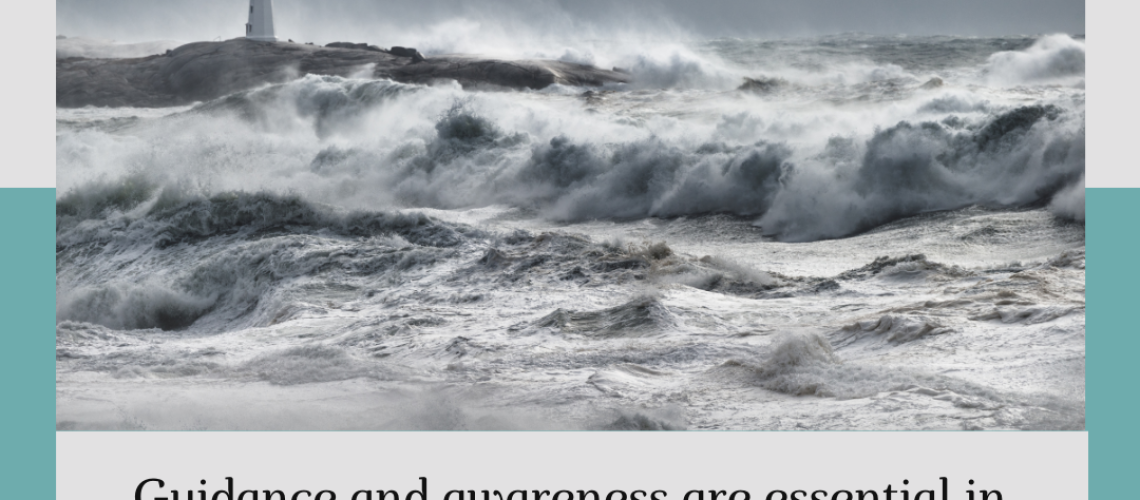Table of Contents Show
Recognizing the signs of stalking and dating abuse is crucial for teens, young adults, and their parents. These behaviors often start subtly but can escalate into dangerous situations. Holly Jackson’s A Good Girl’s Guide to Murder series, particularly the final book, As Good As Dead, provides a chilling look at these issues through Pip’s story of resilience and survival.
Sometimes, fiction can reveal truths we struggle to articulate in real life. That’s how I felt when I read the series. Pip’s journey wasn’t just compelling—it highlighted the emotional toll of stalking, how often survivors are dismissed, and the steps we can take to protect ourselves and others.
In it, Pip faces the terrifying reality of being stalked. It starts with anonymous tweets and emails—messages designed to unsettle her but easy to dismiss as harmless. Then, the behavior escalates. She finds headless chalk stick figures drawn near her house, each one closer than the last. And then, she discovers headless pigeons left as deliberate threats.
Reading Pip’s story struck a deep chord with me. It brought back memories of how easily fears can be dismissed, making survivors feel isolated and powerless. What stayed with me was how Pip’s fears were dismissed by the people she trusted to help her. Despite bringing detailed documentation—photos, timestamps, and notes—to the police, Detective Hawkins brushed her off with comments like “You’re connecting dots that aren’t there” and “It’s just kids messing around.”
This dismissal reminded me of how often survivors of stalking and abuse are silenced—not just by their abusers but by the very people they turn to for help. Stalking is not always an isolated act. It is often a tool used by abusers to control and intimidate their victims, keeping them trapped in fear even when the relationship has ended.
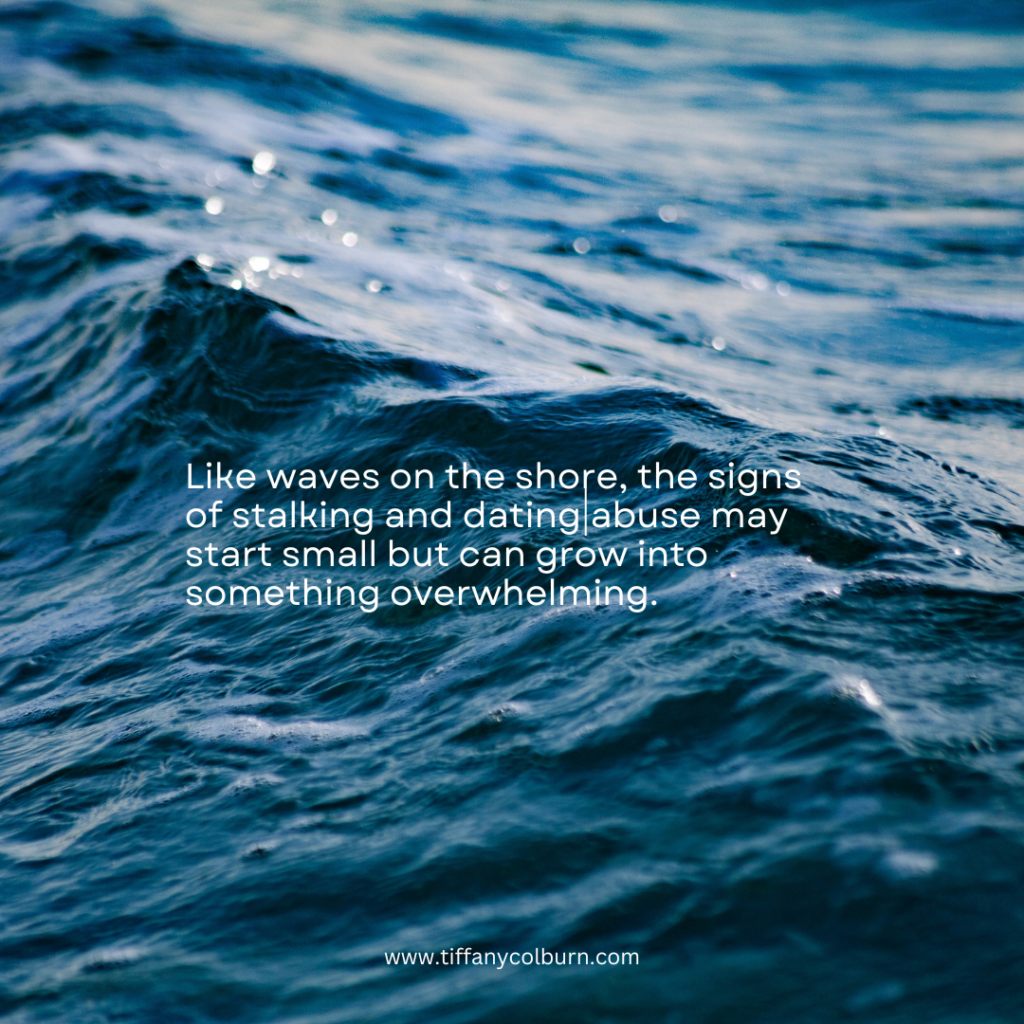
How Stalking Overlaps with the Signs of Dating Abuse
Stalking is rarely about admiration or harmless persistence—it’s one of the key signs of stalking and dating abuse, rooted in power and control. In relationships, this can look like one partner monitoring the other’s movements, sending excessive messages, or showing up uninvited to check on them. These actions are often disguised as concern or affection, making them harder to recognize as abuse.
In Pip’s case, the stalking begins after she’s already faced trauma and loss, a pattern that aligns with the signs of stalking and dating abuse. This is a typical pattern: stalking often escalates when a victim tries to set boundaries or leave a relationship. It’s an abuser’s way of reasserting control, creating fear, and isolating their victim.
Some common stalking behaviors include:
• Making unwanted phone calls repeatedly
• Sending unsolicited or unwanted letters or e-mails
• Following or spying on a current or former partner
• Showing up at places without a legitimate reason
• Waiting at places for a current or former partner
• Leaving unwanted items, presents, or flowers
• Persistently posting information or spreading rumors about a current or former partner on the internet, in a public place, or by word of mouth
Red Flags That Stalking May Be Part of Abuse:
• A partner insisting on knowing your every move or who you’re with.
• Frequent, uninvited visits to your home, school, or workplace.
• Demanding constant communication or getting angry if you don’t reply quickly.
• Using social media to monitor your activity or manipulate your relationships.
• Threatening to harm you or themselves if you try to leave.
These behaviors are not signs of love—they are acts of control meant to isolate and intimidate. Recognizing these patterns is the first step in addressing and preventing stalking and abuse.
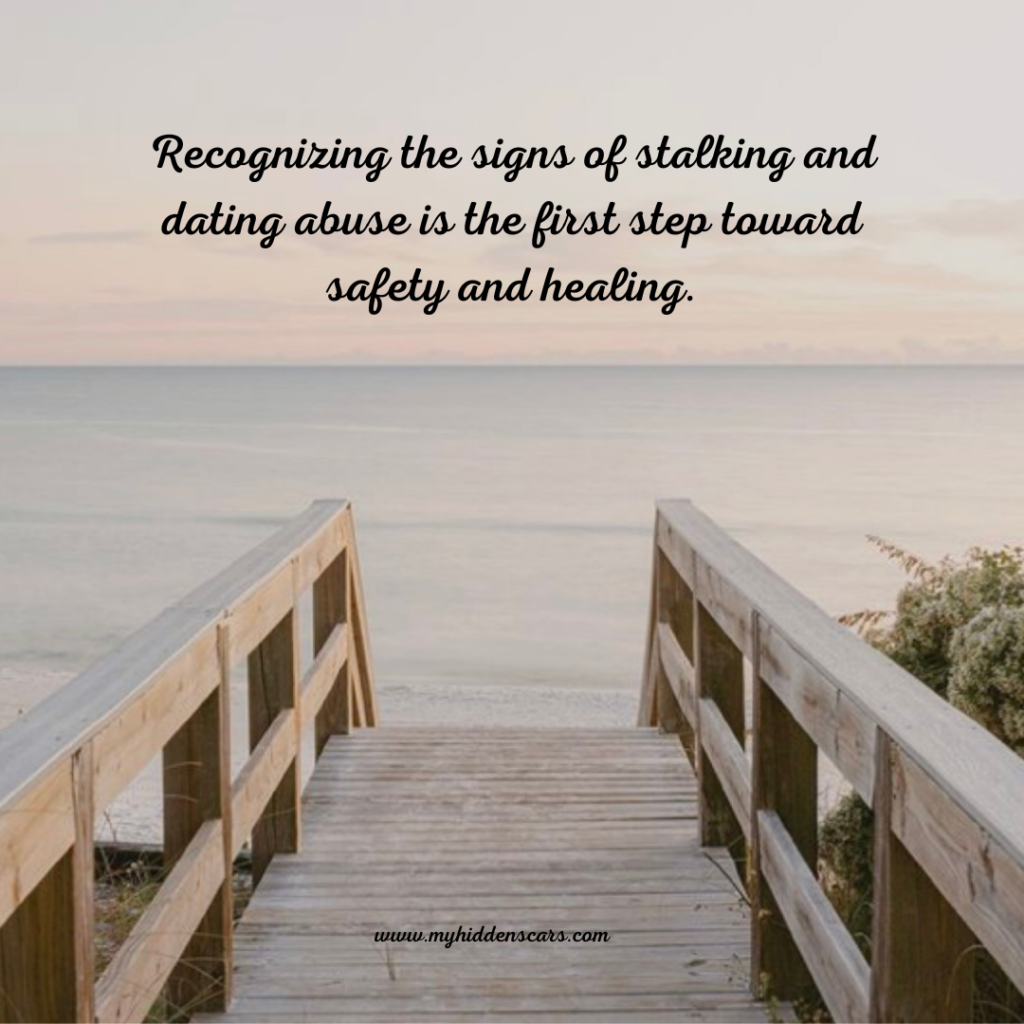
Signs of Stalking and Dating Abuse: What Teens and Young Adults Need to Know
It can be hard to see these behaviors for what they are, especially when they come from someone you care about. You might think, “They’re just being protective,” or feel guilty for wanting space. But no one has the right to control or monitor you, even if they claim it’s out of love.
What You Can Do:
1. Document Everything: Keep screenshots of texts, social media posts, or anything that feels threatening or invasive. Write down dates and details if someone shows up uninvited.
2. Set Boundaries: Communicate clearly about what is and isn’t acceptable to you. If they don’t respect your boundaries, that’s a major red flag.
3. Block and Report: Use the block and report features on social media and messaging apps.
4. Turn Off Location Sharing: Be mindful of apps that share your location and avoid posting where you are in real-time.
5. Talk to Someone You Trust: Share what’s happening with a parent, teacher, or counselor.
Pip’s story is a powerful reminder that your fears are valid. Trust your instincts—they exist to protect you.
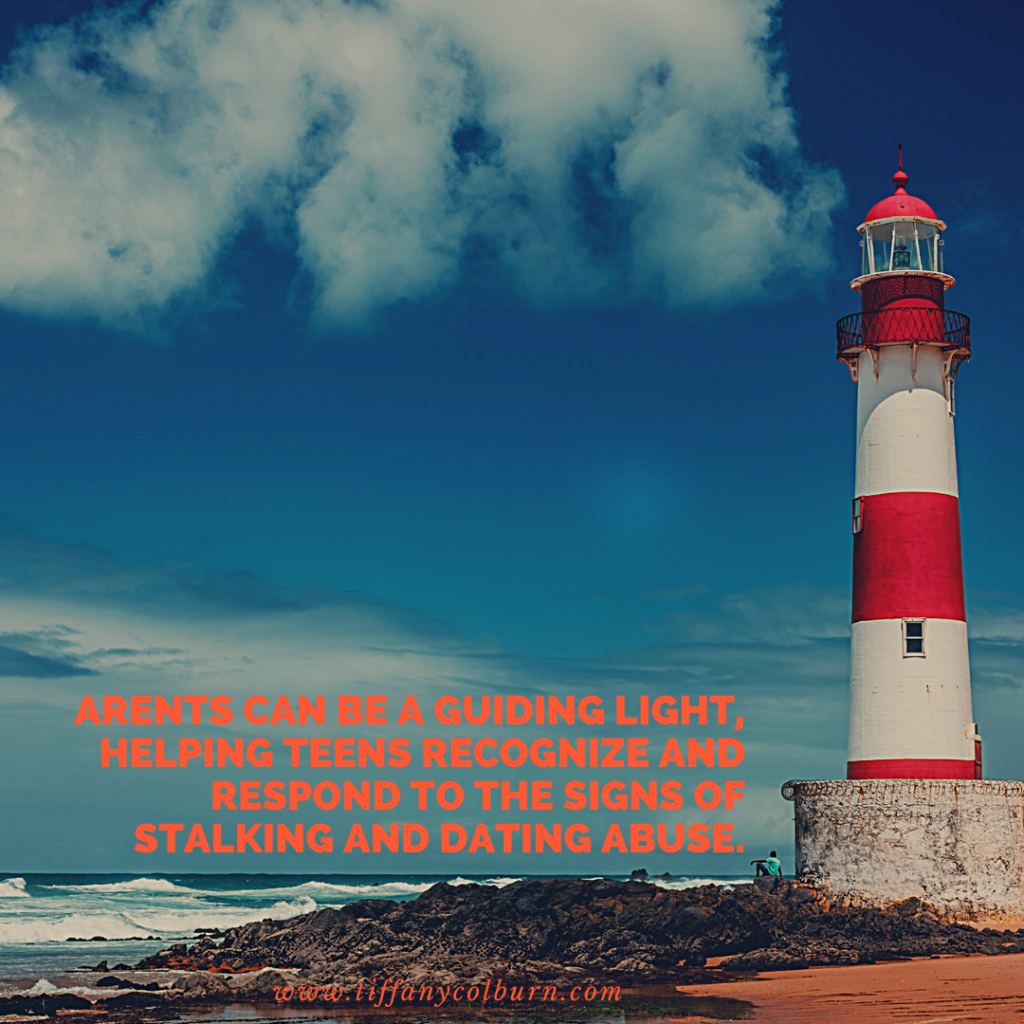
Signs of Stalking and Dating Abuse: A Guide for Parents
Reading Pip’s story also made me think about how important it is for parents to recognize these behaviors and support their teens. Often, teens and young adults don’t see red flags in their relationships or feel unsure about speaking up.
How You Can Help:
1. Foster Open Communication: Let your teen know they can talk to you without fear of judgment.
2. Teach Healthy Boundaries: Discuss what respect looks like in relationships and why controlling behavior is a red flag.
3. Stay Engaged in Their Online World: Talk about online privacy and the risks of sharing too much information.
4. Be Their Advocate: If your teen feels dismissed by others, step in to support and validate their concerns.
5. Model Healthy Relationships: Show what mutual respect and trust look like in your own relationships.
Your support can make all the difference in helping your teen feel empowered and safe.
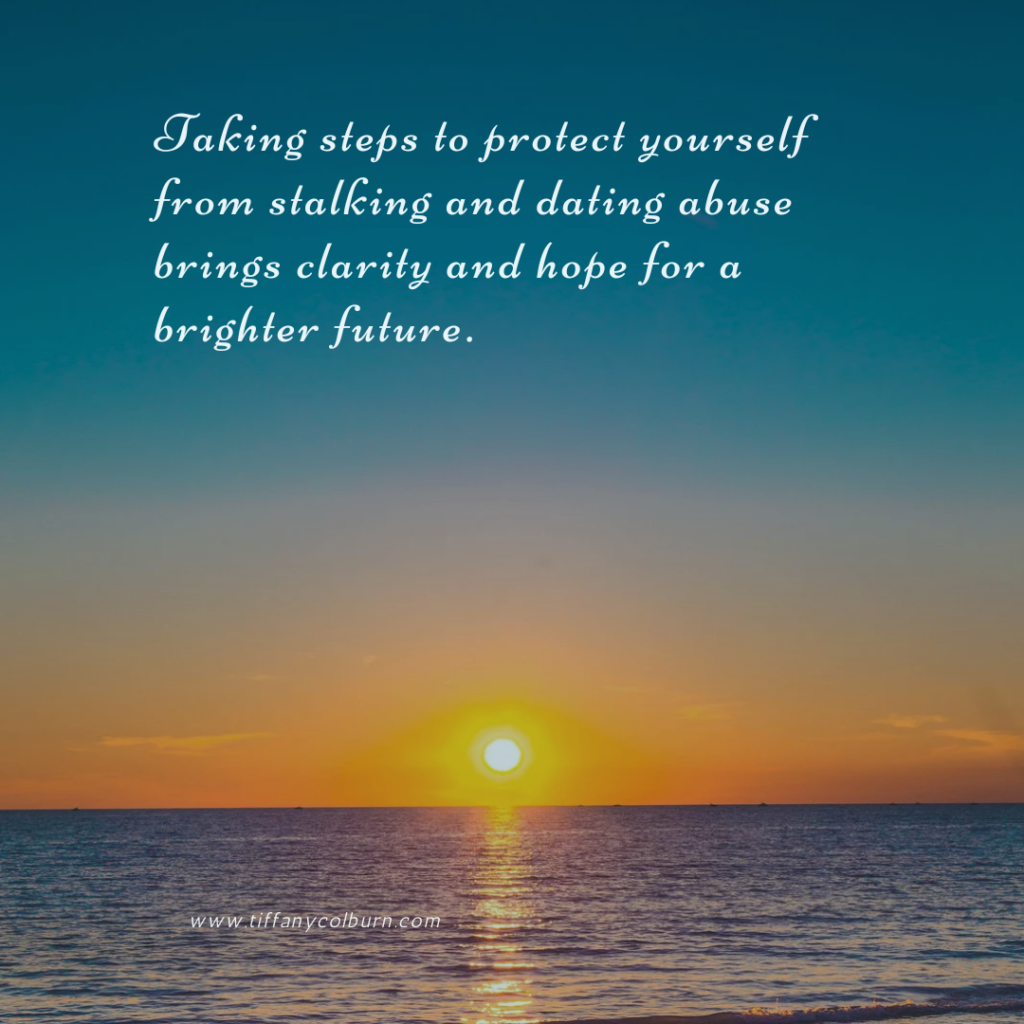
How to Protect Yourself from Stalking and Dating Abuse
If you or someone you know has noticed the signs of stalking and dating abuse, here are steps you can take to protect yourself:
1. Trust Your Instincts: If something feels wrong, it probably is.
2. Keep Records: Save texts, emails, photos, or anything that makes you feel unsafe. Write down dates, times, and details of incidents.
3. Report When Ready: If you feel comfortable, share your concerns with a trusted adult or law enforcement. Even if it’s dismissed initially, having a record helps build your case.
4. Secure Your Environment: Change passwords, adjust privacy settings, and be cautious about what you share online.
5. Reach Out for Help: Use resources like hotlines, school counselors, or local advocacy centers to get support.
Resources for Teens and Parents
If you need additional support, these resources can help:
• National Domestic Violence Hotline: 1-800-799-7233 or thehotline.org
• Love Is Respect: A resource for teens (loveisrespect.org)
• Stomp Out Bullying: Focused on cyberbullying and harassment (stompoutbullying.org)
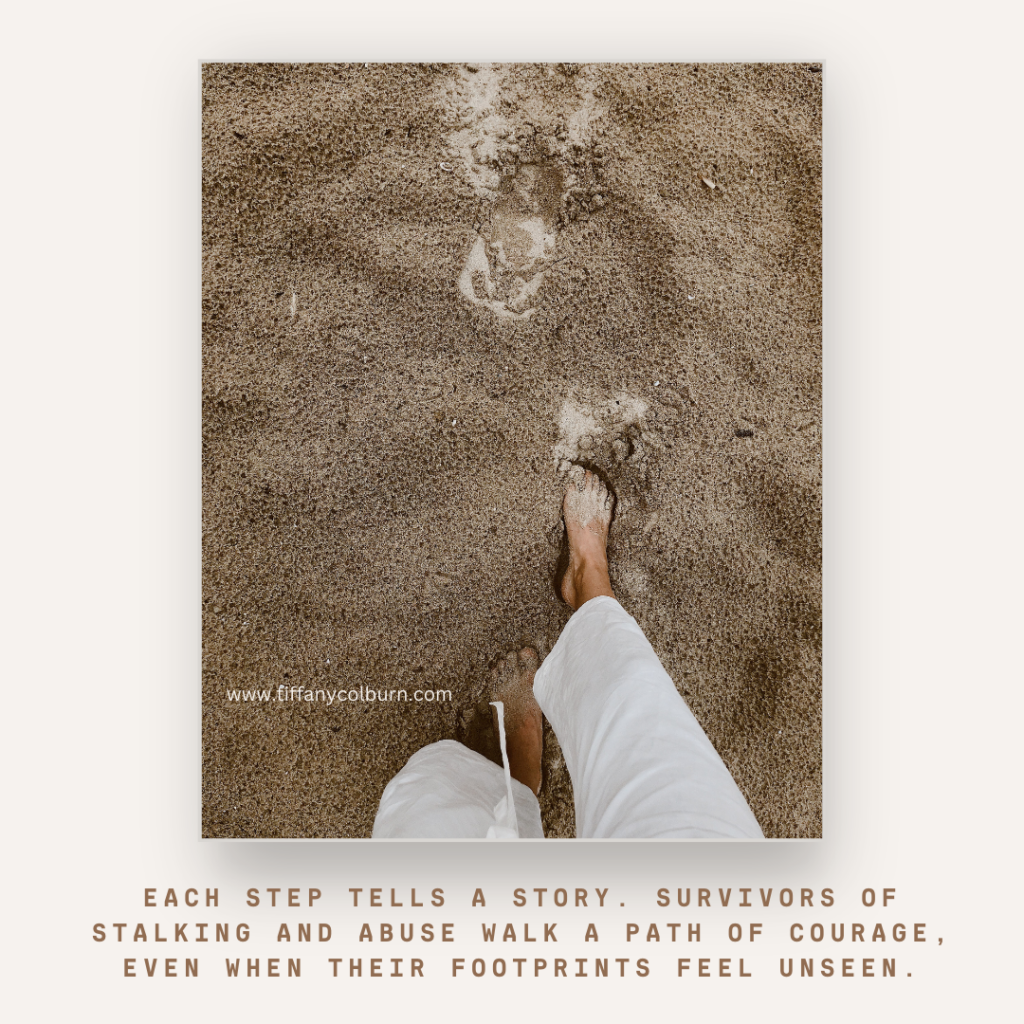
When Fiction Mirrors Reality
What struck me most about Pip’s story wasn’t just the stalking but how her fears were invalidated. Even with clear evidence, she was told she was “overreacting.” This dismissal is something many survivors face, especially those experiencing dating or domestic abuse.
Stalking and abuse can happen to anyone, but by recognizing the signs of stalking and dating abuse and learning how to respond, teens and young adults can take steps to protect themselves. Parents, your role in supporting and guiding your children is invaluable. Together, we can create safer spaces where everyone feels respected, heard, and empowered to act.


